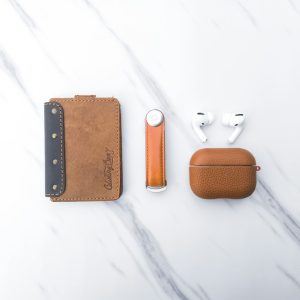
Every marketer has faced the age-old question: “How did you hear about us?” It’s often posed in signup forms, checkout processes, surveys, and onboarding conversations. And although it might seem like a simple question, the answer holds the key to understanding your channel performance, improving return on investment, and optimizing marketing strategies. In the age of complex consumer journeys, mastering attribution requires a blend of smart options and accurate data capture. Let’s explore how businesses can structure this question to enhance channel attribution and make better-informed marketing decisions.
Why Channel Attribution Matters
Channel attribution connects customer actions to marketing campaigns, showing you which sources, messages, or channels are leading to conversions. Whether the journey starts on social media, through search engines, or at an event booth, tracking that consumer path helps allocate budget effectively and refine messaging. Poor attribution can result in wasted spend and misinformed strategy.

Traditionally, attribution models focused on first-touch or last-touch. But with omnichannel user behavior, these models often miss the bigger picture. Combining qualitative input—like “How did you hear about us?”—with tracking data gives businesses a fuller understanding of what’s working.
The Limits of Traditional “How Did You Hear About Us” Questions
Many businesses still use a free-text form field for this question. While this approach is simple, it also introduces several challenges:
- Data inconsistency: Users might write “FB,” “Facebook,” or “from a friend,” making responses hard to categorize.
- Low engagement: Open-ended forms can lead to skipped questions or shallow responses.
- Limited insight: Users may not accurately remember or recognize the true source of their discovery.
Adopting a sophisticated, guided approach can vastly improve the quality, usability, and completeness of your channel attribution data. Let’s explore the options that add structure and enhance insights.
Improved Options for “How Did You Hear About Us?”
1. Dropdown Menus with Predefined Options
One of the most effective ways to introduce clarity is with a dropdown menu offering a set of consistent, predefined choices. This method ensures standardized data and reduces noise, making analysis much easier. Example options might include:
- Google Search
- Facebook Ad
- Instagram Post
- Referral from a Friend
- Online Article/Blog
- Podcast Mention
- Event/Conference
- YouTube
Bonus tip: Add an “Other” option with a small text field for edge cases, but limit its use to maintain dataset cleanliness.
2. Radio Buttons for Simplicity
If you want quick data collection post-signup or during checkout, radio buttons let users select a single option quickly. Since they encourage only one choice, this works best when the user’s referral source is likely to be clear-cut—ideal for direct-response advertising or single-channel campaigns.
3. Multi-Select Checkboxes for Multi-Touch Attribution
It’s no secret that users might encounter your brand in multiple ways before converting. Allow them to choose more than one option with checkboxes. You’ll get a broader view of the marketing funnel and learn which channels warm the lead versus drive the final conversion. This is especially useful for products or services with long decision-making cycles.
4. Context-Aware Dynamic Options
This approach dynamically adjusts the listed options based on known user behavior, location, or campaign parameters. For example, if a user clicked through from a Facebook campaign but didn’t convert right away, when they finally sign up, the form can prioritize showing “Facebook Ad” as the top option, or even preselect it.
This technique bridges passive behavioral tracking with active user feedback, giving marketers both technical and human insight.
5. Hidden Fields with UTM Parameters
UTM (Urchin Tracking Module) parameters are a technical but powerful way to pass detailed attribution data directly into your CRM or analytics tools—without asking the user. When a user clicks a link with UTM tags (e.g., ?utm_source=google&utm_campaign=fall_launch), that data can be captured automatically on the backend using hidden form fields.
This method ensures precise accuracy but doesn’t replace asking the user outright. Instead, it should supplement other approaches to enrich customer journey mapping.
6. Attribution Tools and Software Integration
There’s a growing market of tools designed specifically for marketing attribution. Platforms like HubSpot, Segment, Mixpanel, and Ruler Analytics allow integration of behavioral data, CRM information, and referral codes to trace user journeys across channels. Some even offer AI-powered models that assign weighted value to different touchpoints.
If your marketing efforts span multiple platforms or deal with long sales cycles, investing in attribution software might be the single most effective way to get clarity on what’s driving growth.
Combining Self-Reported and Digital Tracking
The most effective attribution strategies don’t rely exclusively on just one method. Instead, they blend both self-reported insights and digital tracking methods. Here’s how that hybrid model might look in action:
- User clicks a LinkedIn ad with UTM parameters → UTM source and campaign tagged
- User visits the site, browses, and signs up a few days later
- Sign-up form includes “How did you hear about us?” dropdown with options
- CRM captures both their chosen answer and UTM values in hidden fields
- Marketing analytics compares declared source (LinkedIn Ad) with behavioral path
This combination checks for alignment and surface any anomalies—such as if a user credits a podcast, but data shows they arrived through Google search. Such insights unlock higher-fidelity performance evaluation and strategic optimization.
Tips for Designing an Effective Attribution Question
To make the most of your “How did you hear about us?” implementation, follow these best practices:
- Keep it conversational: Phrase the question in a customer-friendly way—e.g., “How did you first hear about us?” or “What brought you to our site today?”
- Place it logically: Ask at the right point in the funnel. Early signups might value speed, while converted users might be more thoughtful.
- Use clear categories: Avoid vague terms. Replace “Online” with specific channel names like “Google Search” or “Social Media Post.”
- Validate user response with data: Use UTM tracking and cookies wherever possible to back up answers.
- Analyze response drop-off: If users are skipping the question, make it optional or reposition it in your flow.
The Role of AI in the Future of Channel Attribution
As AI continues to evolve, expect smarter attribution capabilities. Natural language processing can help categorize free-text entries more accurately, and machine learning can identify patterns across vast datasets to highlight unseen correlations—like the combination of podcast exposure plus social media engagements leading to high conversion.
AI can also assist in real-time personalization. Based on predicted intent and journey, your website can prompt users with a tailored “How did you hear about us?” question that adapts based on their behavior—essentially turning data into dialogue.
Final Thoughts
Asking “How did you hear about us?” isn’t about satisfying curiosity—it’s about sharpening your strategy. When executed thoughtfully, this question becomes a cornerstone of effective channel attribution. By offering structured options and integrating tracking tools, businesses can decode the multi-touchpoint journeys that define today’s consumer behavior.
The evolution from open text fields to intelligent, integrated attribution systems positions marketers to drive smarter decisions, deeper analytics, and more meaningful growth. So next time you think about asking this question, remember: it’s not just what you ask, but how you ask that matters.






